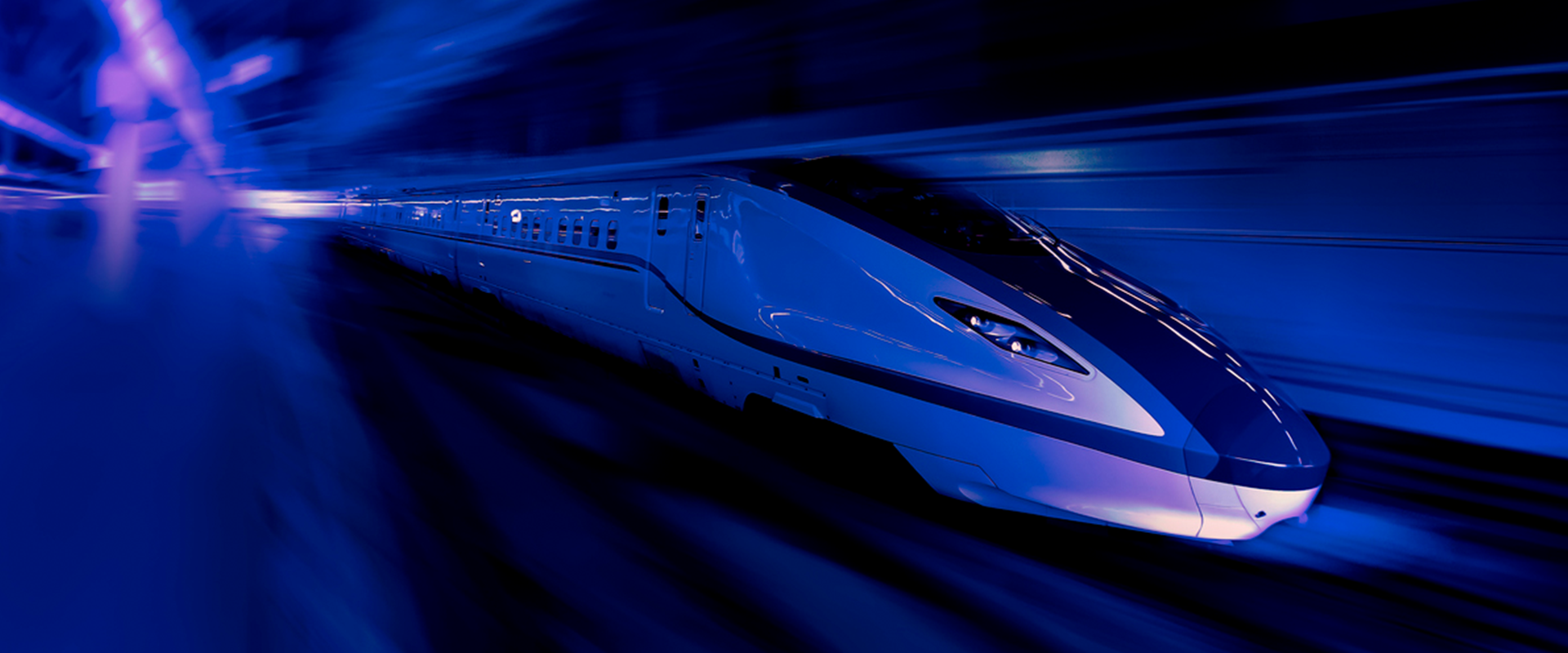With the ability to reach speeds of up to 600 mph, maglev trains and high-speed rail are the better alternatives to aviation and automobiles, promoting economic growth, reducing travel times and reducing emissions.
Since the 1960s maglev trains have been developed as a means to enable faster, more efficient, and environmentally sustainable transportation. With the growing population and ever-increasing demand for travel, the need for futuristic transportation options has never been more pressing.
In this article, we are going on a journey into the world of maglev trains and how they became a reality, and we will also look at some of the most important high-speed rail developments and how they work.
History of maglev and high-speed trains
Maglev or maglev train, according to the world’s oldest continually publishing encyclopaedia, is a ‘floating vehicle for land transportation that is supported by either electromagnetic attraction or repulsion’. The other name for maglev is ‘magnetic levitation train’. Even though maglev is a high-speed train, it operates without a physical contact between the train and the tracks, relying on magnetic levitation and propulsion to glide smoothly above the guideway. This lack of friction allows Maglev trains to reach even higher speeds.
The concept of magnetic levitation for transportation dates back to the early 1900s, and the pioneer conceptualists were American professor and inventor Robert Goddard and French-born American engineer Emile Bachelet. Nevertheless, the development of practical Maglev trains began in the 1960s. James Powell and Gordon Danby of Brookhaven are the developers behind the technology. They were awarded the first patent for a magnetically levitated train design. Powell had the thought while stuck in traffic that there must be an alternative to using regular trains or cars for land travel.
The speed of maglev and bullet trains
Currently, the fastest commercially operational maglev train in the world is the Shanghai Maglev Train, which has reached a top speed of around 430 km/h (267 mph). However, during testing, Maglev trains have reached even higher speeds. For instance, the L0 Series SCMaglev in Japan reached a top speed of 603 km/h (375 mph).
In terms of high-speed trains, the 2022 movie, Bullet Train by David Leitch keeps fans of science-fiction wondering if transport like this exists in the real world. Although it was fictional, the train in the film is similar to the colloquially called Japanese bullet train that was one of the first high-speed trains. Shinkansen – its official name – has been in operation since 1964 and contains multiple lines connecting the major cities of Japan. The JR East-operated Hayabusa train service on the Tohoku Shinkansen line is the country’s fastest bullet train at the moment. The top speed for this Japanese mode of transport at the moment is 320 km/h (200 mph).
How do maglevs and high-speed rail work?
“High Speed Rail is the world’s safest form of transportation proven by decades of operations all around the world. Japan was the first nation to build high speed rail in 1964, and has since transported 10 billion passengers without a single injury or fatality!”
US High Speed Rail Transportation
After finding out how fast these turbo trains can travel, you are probably wondering how these machines work, considering they are the safest modes of transportation in the world.
In the realm of high-speed trains, two distinct types exist: those rolling on wheels and those defying convention. Maglev is one of the high-speed trains that doesn’t have wheels and instead uses electromagnetic forces to move the train above the tracks. Maglev trains use special superconducting magnets that, when chilled to -450℉, create magnetic fields ten times stronger than regular magnets. This power lets them lift and move the train without wheels. Because there’s no friction, these trains can zip along at incredible speeds with ease.
Another type of train which is still in the conceptual stage but which uses magnetic levitation is Hyperloop. It is a system of tubes that connects mobility centres all over the planet, with pods moving at incredibly fast rates in a vacuum. Due to the reduced aerodynamic drag, the low pressure environment enables Hyperloop to operate energy-efficiently.
In terms of high-speed rail on wheels, the French TGV is the fastest wheeled train in the world with a speed of 574.8 km/h (357.2 mph). This record was accomplished on 3rd April 2007 on the new LGV Est and hasn’t been trumped yet. To find out more about different types of high-speed trains, check the top 6 rail innovations article.
Fast trains and sustainability
As the world moves towards a more sustainable future, maglev and bullet trains stand out as a key component in reducing carbon emissions from transportation. By offering an attractive alternative to air and road travel for medium to long-distance journeys, these trains contribute significantly to efforts aimed at combatting climate change.
For example, the use of electronic propulsion systems in Maglevs reduces the use of fossil fuels for power and limits emissions which makes them a sustainable form of transport. With the absence of friction on the tracks, maglev trains generally require less energy to maintain speed, and the regenerative braking system reuses energy that would be lost in conventional trains.
One of Distrelec’s supplying partners is Siemens and Siemens Mobility’s Velaro Novo high-speed innovation is a train that ‘changes speed into sustainability’. With its low energy consumption, it increases sustainability by using energy-efficient propulsion systems, contributing to the use of 30% less energy than previous Velaro models, reducing CO2 emissions by 1,375 tonnes a year.
The future of high-speed rail
As we look towards the future, maglev and bullet trains are set to play a pivotal role in revolutionising global transportation. With their exceptional speed, efficiency, and sustainability, these trains offer a compelling solution to address the challenges posed by growing urbanisation and the need for faster, greener connectivity.
Advancements in engineering and technology continue to drive the evolution of high-speed trains. We can anticipate even higher speeds, greater energy efficiency, and improved safety features in the coming years. Research and development efforts in areas like maglev technology hold the promise of breaking new speed records and further enhancing the passenger experience.
With the world’s demand for faster, more innovative and sustainable travel, these marvels of modern engineering will undoubtedly shape the future of transportation for generations to come.











